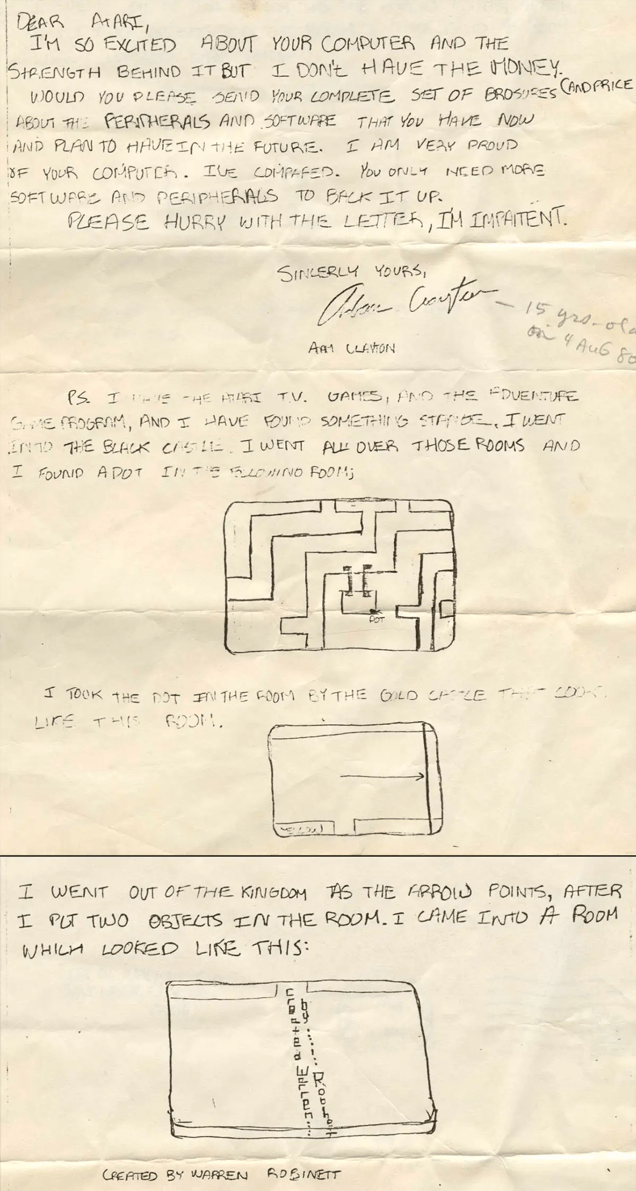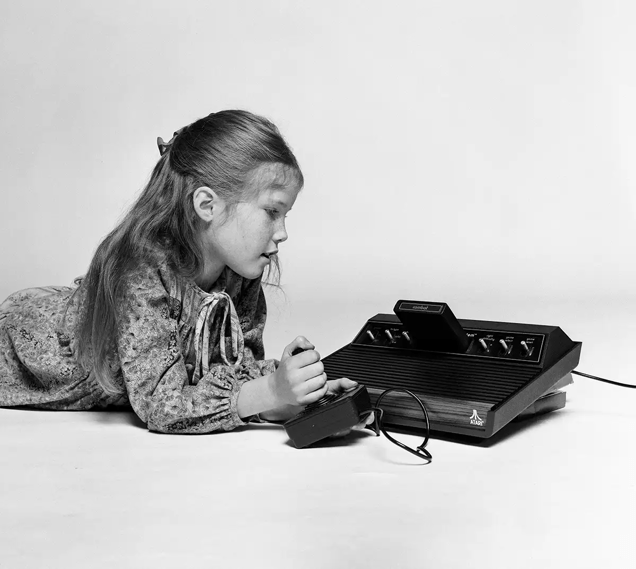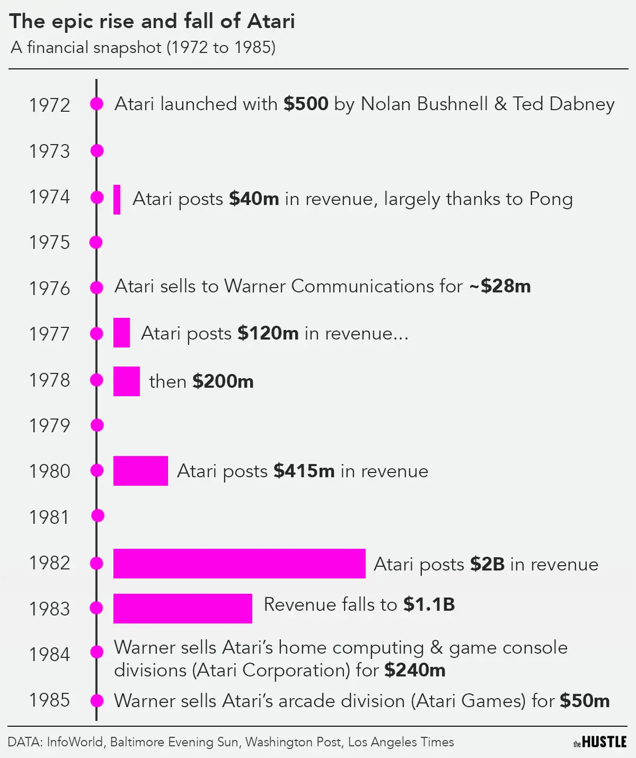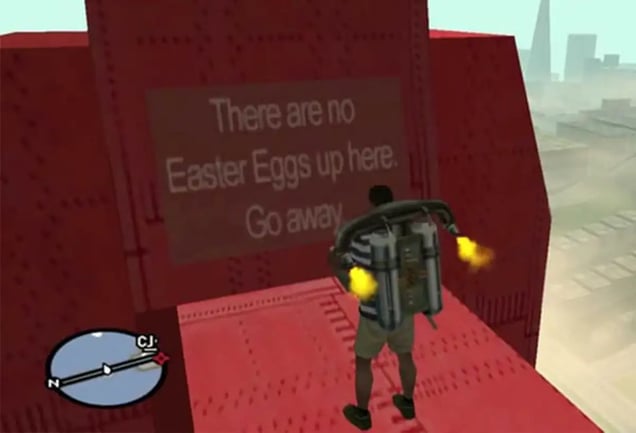In August 1980, Atari’s consumer relations division received a handwritten letter from a 15-year-old boy whose enthusiasm practically leaped off the page.

“I’M SO EXCITED ABOUT YOUR COMPUTER,” he wrote, using all-caps for the entire message.
The young fan’s name was Adam Clayton. He loved Atari and wanted the popular video game company to send him a brochure featuring software options for backing up his Atari system. (“PLEASE HURRY,” he noted.)
Clayton also added a postscript.
He had been playing “Adventure” — a 1980 game in which the player journeys through various rooms in search of a golden chalice — when he discovered something strange.
Clayton had picked up a dot, a secret key, in a black castle and carried it back to an earlier room where the dot granted him access to a door. Inside the door was another room, bordered in purple. The room was mostly bare aside from a message that read, “Created by Warren Robinett.”

Adam Clayton’s letter to Atari in August 1980 (via Atari Compendium)
Clayton was confused and, like any curious teen, wanted to know more.
“I JUST THOUGHT I’D TELL YOU THIS BECAUSE I WANT TO,” Clayton wrote in his letter. “COULD YOU PLEASE COMMENT ON THIS?”
What Clayton had seen was an Easter egg — a hidden message or feature that has become commonplace in movies, video games, and other digital content.
But the Atari employees were just as mystified. They had no idea what the kid was talking about.
And unbeknownst to them, hidden behind the “Adventure” Easter egg was a story of corporate subversion.
The corporate takeover of Atari
In 1972, Nolan Bushnell and Ted Dabney chipped in $250 each (~$1,750 today) to launch a video game company called Atari.
Several months later, they released the table-tennis game “Pong” to worldwide acclaim.
Bushnell acted similarly to the dot-com pioneers of the 1990s, growing the business rapidly and eschewing workplace norms. Before it was common to ditch slacks, dresses, and suits, many Atari employees walked around their Los Gatos, California, office sporting blue jeans.
The laid-back ethos influenced the way Atari made business decisions.
“A fun thing about Nolan (Bushnell) is he had a 4-letter word he used a lot, and that word was neat,” David Crane, a former Atari designer, told The Hustle. “And if he saw something was neat… he would invest in it.”

Nolan Bushnell (left) enjoying life shortly after selling Atari in 1976. (Photo by Barney Peterson/San Francisco Chronicle via Getty Images)
In 1976, Bushnell sold Atari for $28m to Warner Communications Inc., then the parent of Warner Bros.
The payoff was many multiples more than he and Dabney had invested in the company, but the sale ceded control of Atari to a massive East Coast conglomerate ready to do things its way.
Warner Communications ousted Bushnell in 1978, and Ray Kassar — a longtime textile executive and Harvard Business School graduate — was named CEO.
Kassar’s main goal was to increase sales of Atari’s home gaming system (now known as the Atari 2600) and enhance its corporate structure.
To precipitate growth, Atari went on a hiring spree, bringing in 20-somethings who were fresh out of college and grad school to design video games.
These days, video games require extensive work from dozens of people with varying specialties. But Atari 2600 games were not nearly as complex. A single designer typically built an entire game from scratch:
- They generated the idea
- They wrote every line of code
- They created the graphics and sound effects
The process involved a difficult mix of left brain and right brain and the ability to build a world that felt expansive, despite dealing with a limited amount of memory.

A young girl playing on the Atari 2600, a home video game console by Atari, December 1980. (Photo by Wilkinson/Daily Mirror/Mirrorpix/Getty Images)
To Kassar, however, the designers were replaceable.
Crane says Kassar called them prima donnas and compared them to people who created patterns on towels.
One day in 1979, Atari’s marketing department circulated a memo listing the top-selling games of the previous year and the amount of money they had brought in. The purpose was to inspire designers to make similar games.
But the takeaway for Crane and other designers was that Atari undervalued them.
- The memo stated the company had made ~$100m on game cartridge sales in 1978 ($420m in today’s money and ~10% of Warner’s total revenues). Because individual designers were responsible for individual games, several designers saw they drove millions in sales.
- Yet most designers made salaries between ~$16k and ~$25k ($67k-$105k today), regardless of how much revenue they drove. Meanwhile, Kassar made ~$3m a year ($12m today) and had use of a corporate helicopter and Rolls-Royce.
According to former designers, Atari promised bonuses and a royalty system that never came to fruition under the control of Kassar and Warner, who engaged in “Hollywood accounting” to make profitable projects appear worthless on paper.
To a young designer named Warren Robinett, the friction between the corporate bosses and the designers felt like a conflict where one side had a clear advantage.
“It was a David and Goliath situation,” Robinett told The Hustle.
The secret room
Atari was Robinett’s first job after graduating with a master’s degree in computer science from the University of California, Berkeley.
He liked the creativity and independence of being a designer. What he didn’t like was the compensation and the lack of recognition. Besides not paying royalties, Atari refused to credit designers in any public fashion.
This practice perplexed the designers, who felt they were similar to authors of books or directors of movies. Robinett believes Atari didn’t want its designers to become recognized, lest the company be forced to offer higher salaries.

Warren Robinett designed “Adventure” for Atari, one of the first fantasy video games (Courtesy of Warren Robinett)
Kassar also couldn’t get beyond his textile industry mindset.
“The idea of putting our names on (the games) was foreign to them,” Crane says, “any more than they would put the designer’s name who designed a towel on a towel.”
Crane and fellow designers Larry Kaplan, Alan Miller, and Bob Whitehead protested their compensation to an unswayed Kassar after the memo circulated. They left in October 1979 and founded Activision, where they promised credit and fair pay for designers.
Robinett had an escape plan, too, but he wanted to try something on his way out the door.
After starting in 1978, he designed “Slot Racer” and was working during most of 1979 on “BASIC Programming” and “Adventure.” In “Adventure,” he realized he could insert his name into one of the game’s many rooms.
Robinett didn’t tell anyone about it, and nobody discovered the secret room while testing the game. Atari shipped thousands of copies into the world, oblivious that Robinett’s signature could be unlocked by any player.
“It was kind of a little fuck you to Atari management,” Robinett said. “They took away my royalty, but I tricked them into publicizing my name.”
Robinett quit Atari after finishing “Adventure” and traveled in Europe for several months in early 1980.
He was back in the US, planning a new business venture called The Learning Company, around the time the letter arrived from Adam Clayton.
Robinett’s Easter egg, hidden in the game “Adventure,” was simple: it listed him as the creator of the game (via YouTube)
Robinett’s Atari designer friends Carla Meninsky, Brad Stewart, Rob Fulop, and others wanted to know the details. Over pizza and beer, Robinett explained how he designed the secret room and got it past Atari.
“They were all smiling when I told them,” he said. “It appeared to me that they were right then planning their own Easter eggs.”
The proliferation of Easter eggs
As word spread about Robinett’s secret room on school playgrounds and insider gaming publications, Atari decided to embrace its former designer’s act of rebellion.
An Atari manager named Steve Wright told Electronic Games the company expected to plant “little ‘Easter eggs,’” in future games, coining the term that has lasted for decades.
But Atari and Kassar were too late to salvage their relationships with many designers.
With Crane and others forming new companies like Activision and Imagic and computer games gaining in popularity, Atari fell from its perch as the world’s most powerful gaming company and cratered during the 1983 video game crash.

Zachary Crockett and Mark Dent / The Hustle
A 1983 story in InfoWorld described Kassar, who died in 2017, as “an emperor.”
“Instead of moving around the giant company and discovering what people were doing and what their problems were he stayed in his office, writing memos and making phone calls,” wrote InfoWorld journalists John Hubner and William Kirstner Jr.
“Adventure,” which Atari had discouraged Robinett from making, sold 1m+ copies at ~$25 each — $0 of which went to Robinett.
Among the buyers was Ernest Cline, who included Robinett’s name in Ready Player One, the book turned Steven Spielberg movie about a hunt for an Easter egg in a virtual reality universe. Cline’s work helped cement Robinett’s legacy as one of the early originators of the Easter egg.
Before Robinett, other designers had included secret messages and graphics in arcade games in the 1970s.
Ron Milner, who worked at Atari from 1972 to 1985, inserted an Easter egg in the arcade game “Starship 1.” If a player followed a certain sequence of controls, the message “Hi Ron” would flash on the screen and the player would be awarded 10 free games.
The Easter egg was proof that Milner had designed “Starship 1.”
“I could go to an arcade with my friends and say, ‘Hey, I made this game,’” Milner said.
That was a common reason for early Easter eggs: a desire from designers to get their names into the world and express themselves in industries that were suppressing individuality.
“They were clever people who saw their work like an artist might see a painting,” said Ed Fries, a former designer and former VP of game publishing at Microsoft who has researched the history of Easter eggs. “They were proud of what they created and wanted to be remembered in the future for their work.”

An Easter egg in the popular video game “Grand Theft Auto: San Andreas” (2004) reads “THere are no Easter eggs here. Go away.” It’s one of hundreds of Easter eggs hidden in video games over the years. (via YouTube)
After Atari, Robinett and his co-founders turned The Learning Company into a successful, public software business that was later acquired in a hostile takeover bid by Kevin O’Leary (of “Shark Tank” fame) for $606m.
Robinett went on to work in virtual reality for NASA and as a virtual reality researcher at the University of North Carolina.
These days, he tackles various projects — and takes plenty of time to travel.
While talking on the phone somewhere in the mountains between Marfa, Texas, and El Paso, Robinett considered how he would frame his Easter egg from “Adventure” compared with how entertainment companies celebrate and publicize Easter eggs today.
“The word ‘Easter egg’ doesn’t apply that well to what I did, from my point of view,” he said. “It was a signature — an act of rebellion and defiance.”

